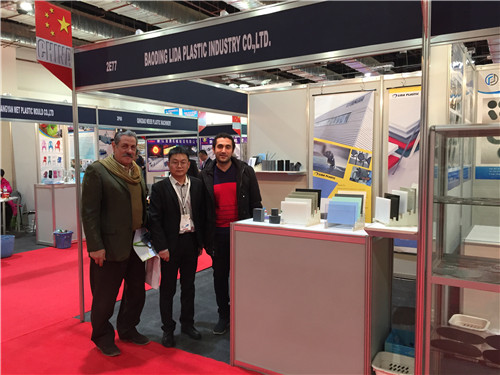Dec . 09, 2024 19:50 Back to list
Optimal PPR Cold Water Pipe Solutions for Efficient Plumbing Systems
Understanding PPR Cold Water Pipe Systems A Comprehensive Overview
PPR (Polypropylene Random Copolymer) pipes have gained significant traction in the plumbing and construction industries, especially for cold water applications. These pipes are known for their durability, corrosion resistance, and ease of installation. This article delves into the characteristics, benefits, applications, and installation of PPR cold water pipe systems.
Characteristics of PPR Pipes
PPR pipes are manufactured using a thermoplastic polymer that consists of a random copolymer polypropylene. This material is engineered to withstand a range of temperatures and pressures, making it an ideal choice for cold water applications. Some notable characteristics of PPR pipes include
1. Temperature Resistance Although primarily used for cold water, PPR pipes can also handle moderate temperatures, making them versatile for various installations.
2. Corrosion Resistance Unlike metal pipes, PPR pipes do not corrode or rust over time, which enhances their longevity.
3. Chemical Resistance PPR is resistant to most chemicals encountered in household and commercial applications, ensuring the safety of potable water.
4. Low Thermal Conductivity The low thermal conductivity of PPR prevents heat loss, improving efficiency in temperature maintenance.
5. Lightweight and Flexible PPR pipes are lightweight, making transportation and handling during installation easier. Their flexibility allows for creative routing in complex systems.
Benefits of PPR Cold Water Pipes
The advantages of using PPR pipes for cold water systems are numerous
1. Durability With a lifespan of over 50 years under normal conditions, PPR pipes offer long-term reliability.
2. Cost-Effectiveness Though the initial investment might be slightly higher than traditional PVC pipes, the durability and low maintenance costs lead to significant savings over time.
3. Ease of Installation PPR pipes can be easily welded together using heat fusion techniques, which not only simplify the process but also create a seamless and leak-proof joint.
ppr cold water pipe

5. Sound Insulation PPR’s structure helps reduce water hammer noise, contributing to a quieter environment.
Applications of PPR Cold Water Pipes
PPR pipes are suitable for various applications beyond basic plumbing. Their attributes make them ideal for
1. Residential and Commercial Plumbing Used in cold water supply lines, they provide safe drinking water with minimal risk of contamination.
2. Air Conditioning Systems PPR pipes serve as conduits for chilled water in HVAC systems, ensuring efficient temperature control.
3. Irrigation Systems The flexibility and resistance to UV light make PPR excellent for outdoor irrigation solutions.
4. Industrial Applications PPR pipes are increasingly used in factories and processing plants due to their ability to handle various chemical environments.
Installation and Maintenance
Installing PPR cold water pipes requires adherence to specific guidelines to ensure optimal performance. Key points include
1. Proper Preparation Ensure pipes are cut straight and fittings are clean for a smooth fusion process.
2. Heat Fusion Utilize a fusion welding technique recommended by manufacturers, as improper welding can lead to leaks.
3. Expansion Considerations Account for thermal expansion during installation to prevent stress on the pipes.
4. Regular Inspections Although PPR pipes require minimal maintenance, periodic checks for signs of wear or damage can prolong their lifespan.
In conclusion, PPR cold water pipe systems represent an innovative and reliable solution for a range of plumbing needs. Their durability, efficiency, and environmental benefits make them a preferred choice among professionals in the industry. With proper installation and maintenance, PPR pipes can provide years of trouble-free service, ensuring safe and efficient water supply systems in homes and businesses alike.
-
HDPE Natural Sheet: Durable, Food-Grade & Versatile Plastic Solutions
NewsAug.27,2025
-
Durable Glossy PVC Rigid Sheet | Premium High-Shine Panels
NewsAug.26,2025
-
Durable PP Rigid Sheet: Lightweight, Chemical Resistant Solutions
NewsAug.21,2025
-
PVC Grey Sheet for Extraction: Chemical Resistant & Durable
NewsAug.19,2025
-
Durable PVC Pipe Fittings for Plumbing & Irrigation Needs
NewsAug.18,2025
-
HDPE Steel Belt Reinforced Spiral Corrugated Pipe | High Strength
NewsAug.17,2025

